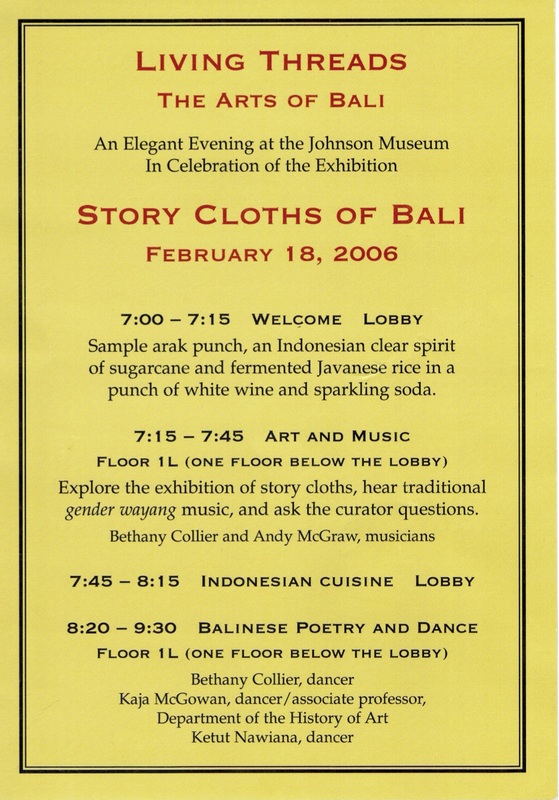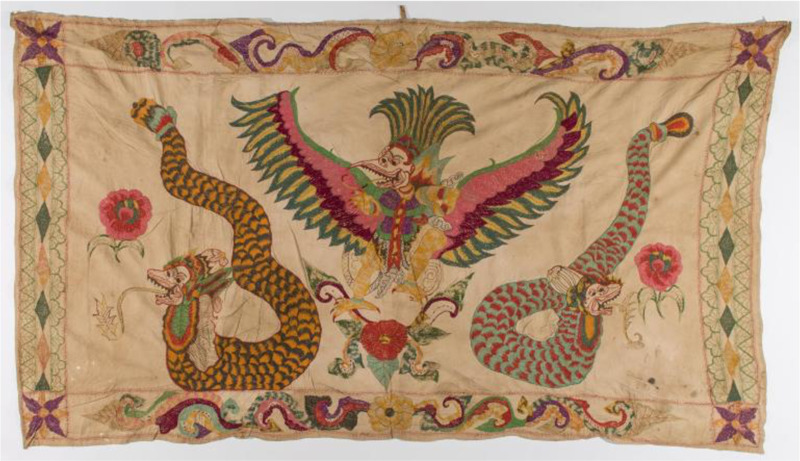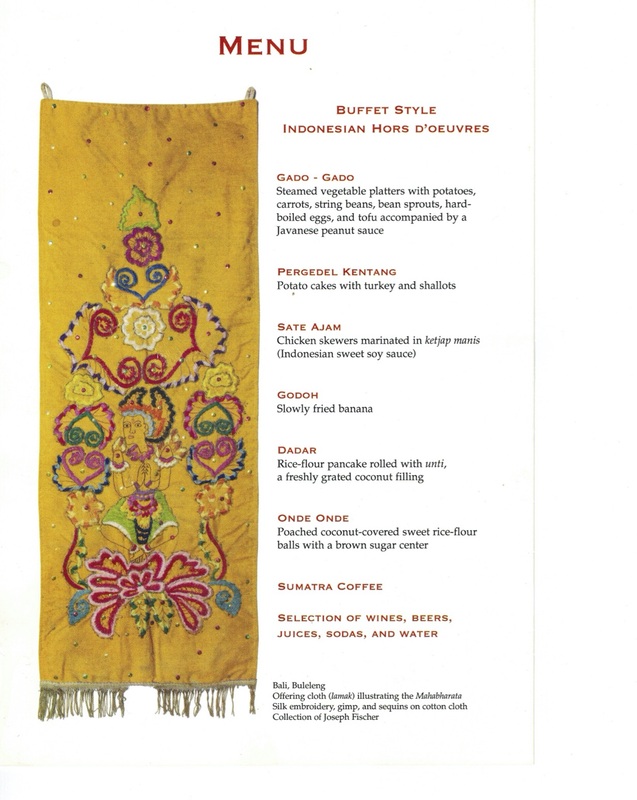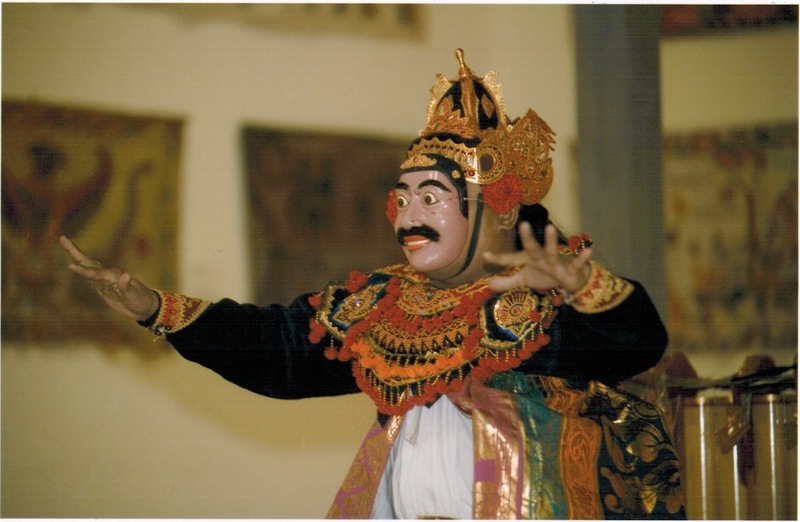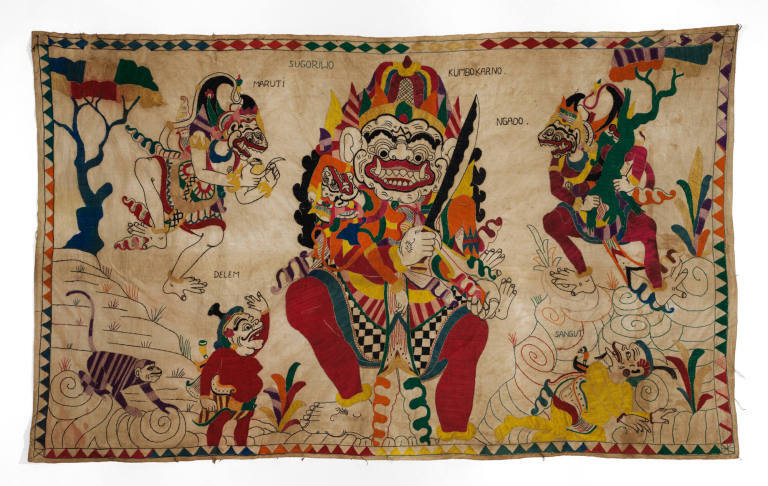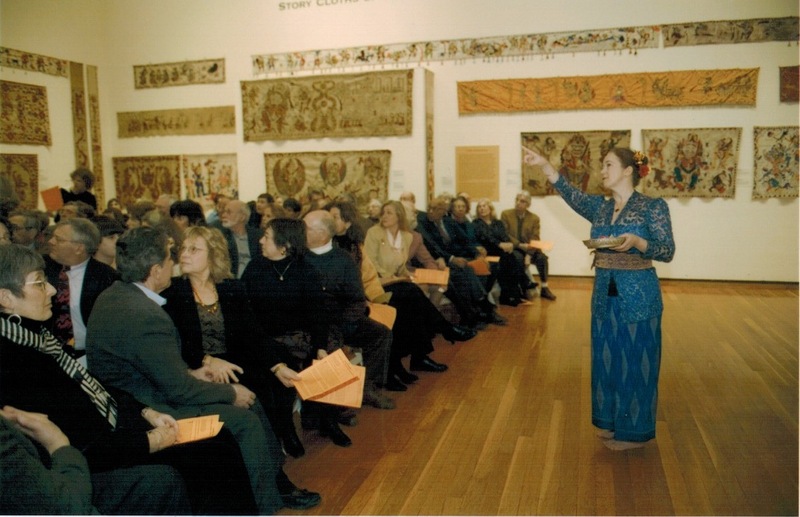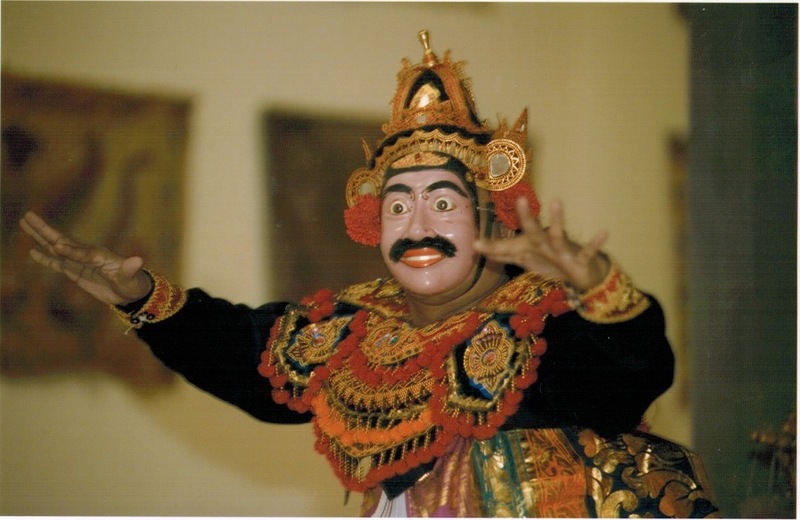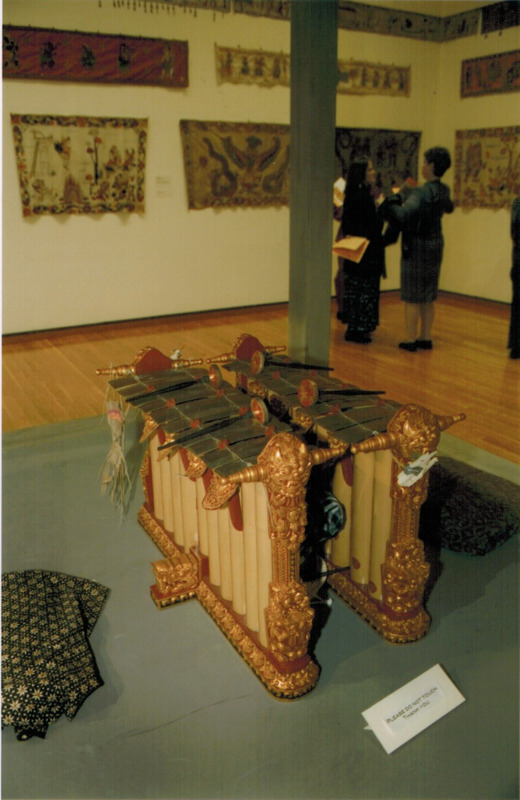"Story Cloths of Bali" Exhibition at the Herbert F. Johnson Museum in 2006
By Astara Light
The artworks and exhibition explored on this page are part of a collection of Balinese story cloths from Joseph Fischer, an expert on Indonesian art and author of the books Story Cloths of Bali and The Folk Art of Bali. Fischer developed an extensive collection over a period of time and highlighted these objects as lesser-known art forms through his writings. Story cloths relate closely to Balinese performance traditions, like shadow puppet theater, or Wayang Kulit.
The acquisition of story cloths from Joseph Fischer and the ider-ider from 102 West Avenue mark a particular shift in museum collections and expanding categories of art. Their materiality and visual narratives are intertwined with other art forms and religious practices in Bali, Indonesia. Although the ider-ider from 102 West Avenue was not part of the story cloths exhibition, it was acquired very soon after the exhibit and coincided with the acquisition of several story cloths. Many of the textile artworks in Fischer’s collection share visual qualities with the ider-ider of the Baratayuda since the figures depicted also stylistically resemble shadow puppets. But unlike the larger ider-ider, these textiles are decorated with rich embroidery rather than painted. Some of the works from Fischer’s collection exemplify two formats of ritual textile art, ider-ider and tabing, that would be used in Balinese temples.
These story cloths are made by women from the Jembrana and Buleleng districts of western and northern Bali to narrate the Hindu epics of the Ramayana and Mahabharata in a rich and innovative way. They integrate colorful backgrounds and sumptuous threads that have been intricately stitched. Textiles have historically been categorized as “craft” objects rather than works of art. However, given the skill required to make these detailed works and their socio-cultural and religious value, they can certainly be recognized as art forms. Having a collection of story cloths of this size and with the amount of documentation that Fischer had compiled is a significant change in museum spaces.
In 2006 a large exhibition at the Herbert F Johnson Museum highlighted many of the story cloths in Joseph Fischer’s collection. Fischer had reached out to Professor Kaja McGowan given her focus on Balinese art and Cornell’s well-known Southeast Asia Program. This exhibition, featuring artworks on loan from Fischer, was curated by Ellen Avril with support from Kaja McGowan and the Southeast Asia Program. The reception included performances by Professor Kaja McGowan, Ketut Nawiana and Bethany Collier, a former SEAP graduate student.
Photos taken from this event show different story cloths hung on the walls of the space. Some of them are ider-ider, meaning they are long narrative works designed to be hung horizontally or wrap around a space; others, called tabing are rectangular shaped works that are often hung on the inside walls of a temple space. Notably, the temple-shaped structure that is visible in the central area of this exhibition was built at the museum specifically for the “Story Cloths of Bali” exhibit. Although this structure was meant to be temporary, it is actually the same outdoor shelter that stands in front of the Kahin center today.
In 2007 many of these story cloths from Fischer’s collection were acquired by the museum as a partial gift and purchase through the George and Mary Rockwell Fund. It seems that the “Story Cloths of Bali” exhibit prompted an appreciation of textile art, including the ider-ider from 102 W. Ave. According to McGowan, Fischer’s book showed that these “embroidered fabrics were a more feminine example of the wayang Kamasan tradition." So when the ider-ider from 102 W. Ave was found at the library there was an "immediate acceptance of the object.” This marks an increased awareness of the value of Indonesian textiles as art forms.
There have been many shifts in the representation of Southeast Asian art at the Herbert F. Johnson Museum over the years, and particularly after Ellen Avril became the curator of Asian Art. Prior to the “Story Cloths of Bali” exhibit and acquisition of many of these objects, there were very few, if any, Balinese artworks in the collection. This exhibit also marked one of the earliest collaborations between Ellen Avril and Kaja McGowan.
In our conversation, Avril described how the collection has grown over the years to include a wider range of artworks from different regions and countries in Asia. Previously, the museum’s main focus was on East Asia, particularly Chinese and Japanese art. Another change that boosted the representation of Southeast Asian art at the Johnson museum was the 2011 expansion and renovation of the 5th floor. The Asian art collection had always been on that floor, but only on the exterior walls located by the windows. At that time the inner space was used for offices rather than galleries. The renovation opened up space to exhibit a larger number of works in the collection. It also facilitated the exhibition of more fragile artworks, like these Balinese story cloths and Indonesian shadow puppets, which are too delicate to be displayed near windows.
In many ways, the collections has also evolved in response to the teaching needs of faculty and the value of the collection for Cornell classes in different disciplines. Stanley O’Connor, Claire Holt, and Kaja McGowan in particular have incorporated the museum’s collection into their curricula. It is fascinating to see how different collections overlap and intersect with each other even when they come from different sources. Artworks like the ider-ider at 102 West Ave and other Balinese story cloths have gradually made their way into museums. At the Herbert F Johnson, these story cloths and other Southeast Asian artworks continue to be an integral part of the collection and are frequently used for teaching in a range of classes.
Sources and thanks
The majority of information in this essay is from email, phone, and Zoom conversations with Kaja McGowan and Ellen Avril in 2020, a very special thanks for their time and contributions to this topic.
And many thanks to Frank Robinson for the photos of the "Story Cloths of Bali" exhibition reception

